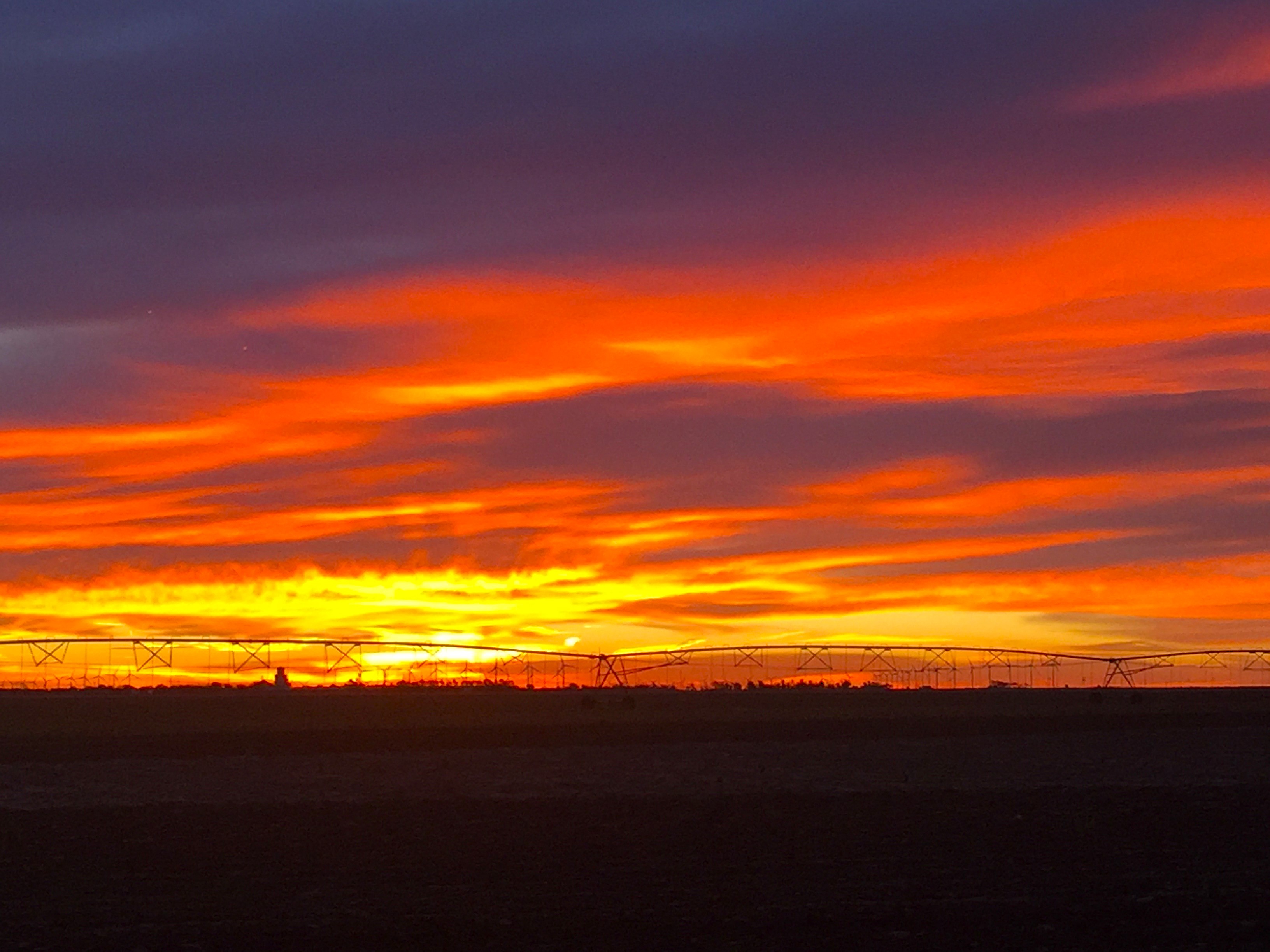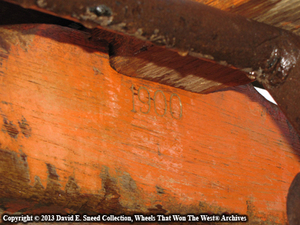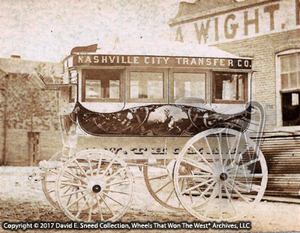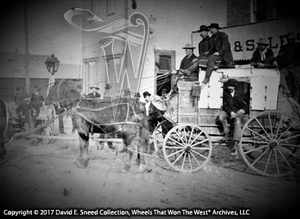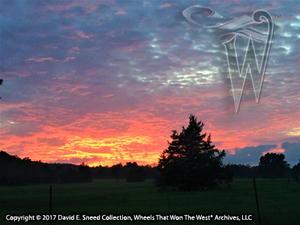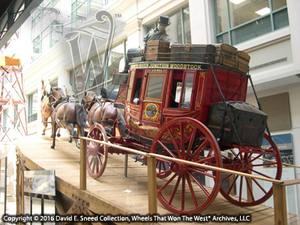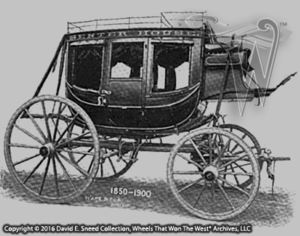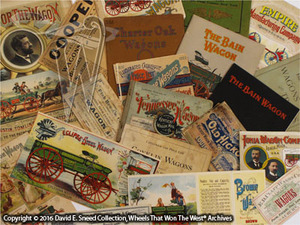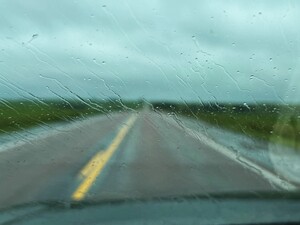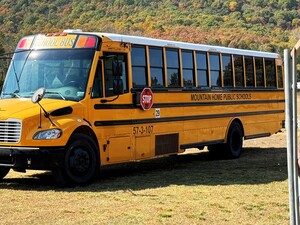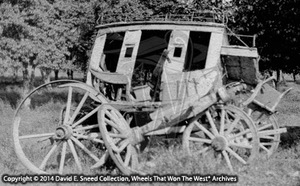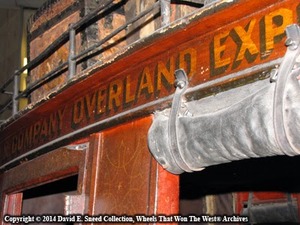On September 10, 2024, I posted a blog entitled "Backtrack." It covered a number of things to consider when researching early western vehicles. One point I dealt with is the value of networking with additional people. It's impossible to be everywhere and see everything. By connecting with others, though, we can increase the potential of uncovering incredible finds while also developing great friendships.
To that point, this story is one that came together in an amazing way for one of the vehicles in our collection. As many know, we're fortunate to own a J. Stephens Abbot (Abbot-Downing) stage that is believed to have been built during the 1860/1861 timeframe when the powerhouse partnership of Abbot and Downing was separated. The lower, five-digit order number it carries seems to corroborate an earlier build date than most Abbot-Downing Heavy Overlands seen today. It's one of those rare survivors of the American West that's never been restored, even though it ran in Utah, Idaho, and Montana for over a half century. As we've 'backtracked' from the known history of the vehicle, we've uncovered a wealth of additional provenance. Routes, wrecks, drivers, owners, parades, and even a decade-long stint in a Montana museum are part of what we've uncovered about this vehicle's past. Still, there are holes to fill in the stage's story. Among the missing physical parts of this old stage are the oil-burning, side lamps as well as the lamp mounting bracket for the right side of the body. The left side still has the original bracket. It's bent and weathered but remains attached.
The lamps and right-side bracket have been missing for at least 140 years. We know this because we've located a number of nineteenth and early twentieth century photos of the coach. In each old image, the lamps are missing. Incredibly, the shots of the nigh side show the same left side bracket, missing the lamp and bent to the very same shape it's still in today. That bent bracket, as well as dozens upon dozens of other one-of-a-kind damages, styling adaptations, metal positionings, paint, lettering, and other exclusive feature markers (as well as geographic image locations within Idaho and Montana) have been key to tying each of the photos to the stage. Top to bottom, this is a significantly customized stage with altered design elements unlike any other. Fortunately for us, those exclusive characteristics and the known locations of operation have been instrumental in chasing the provenance of this history-laden machine.
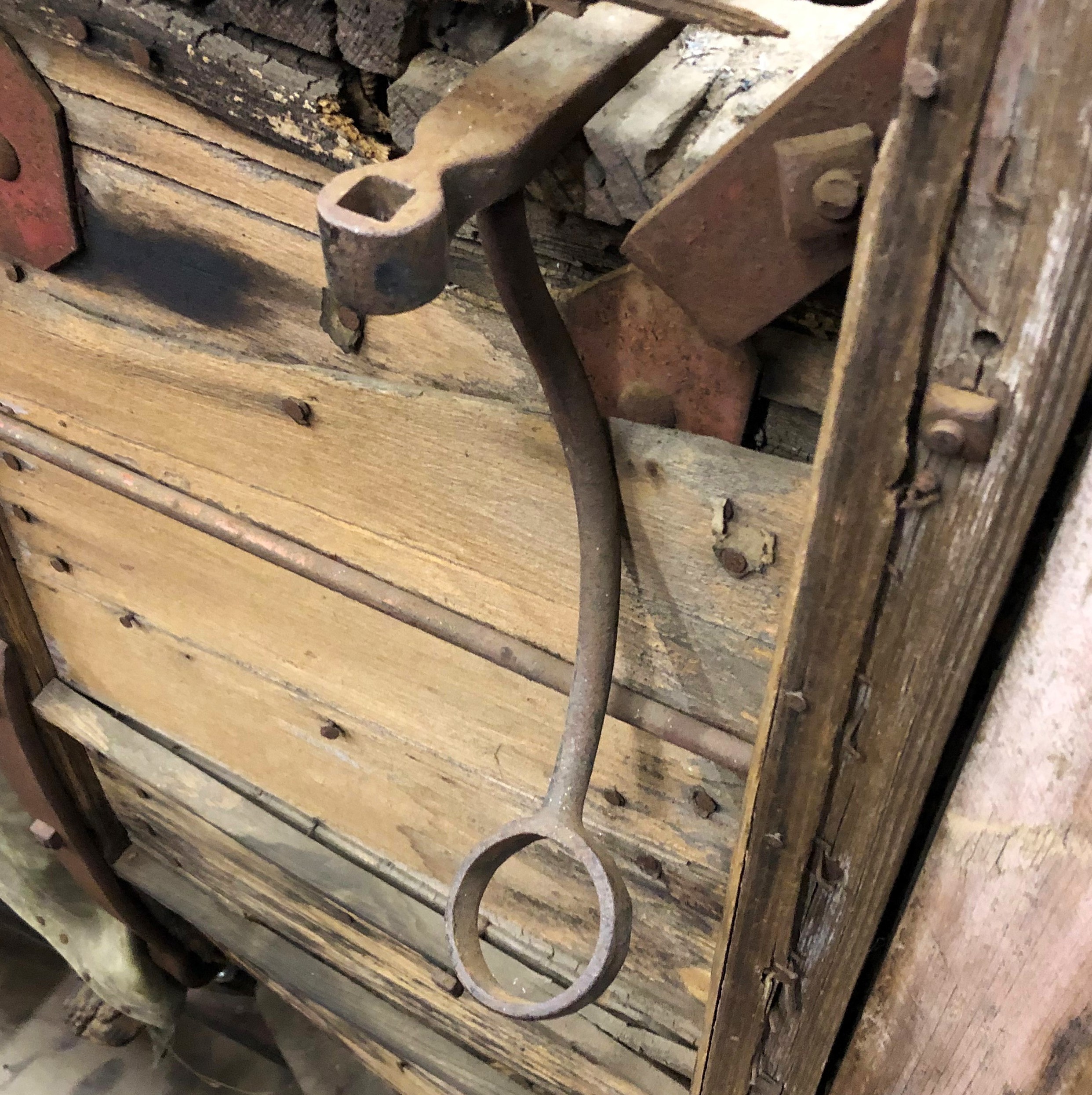
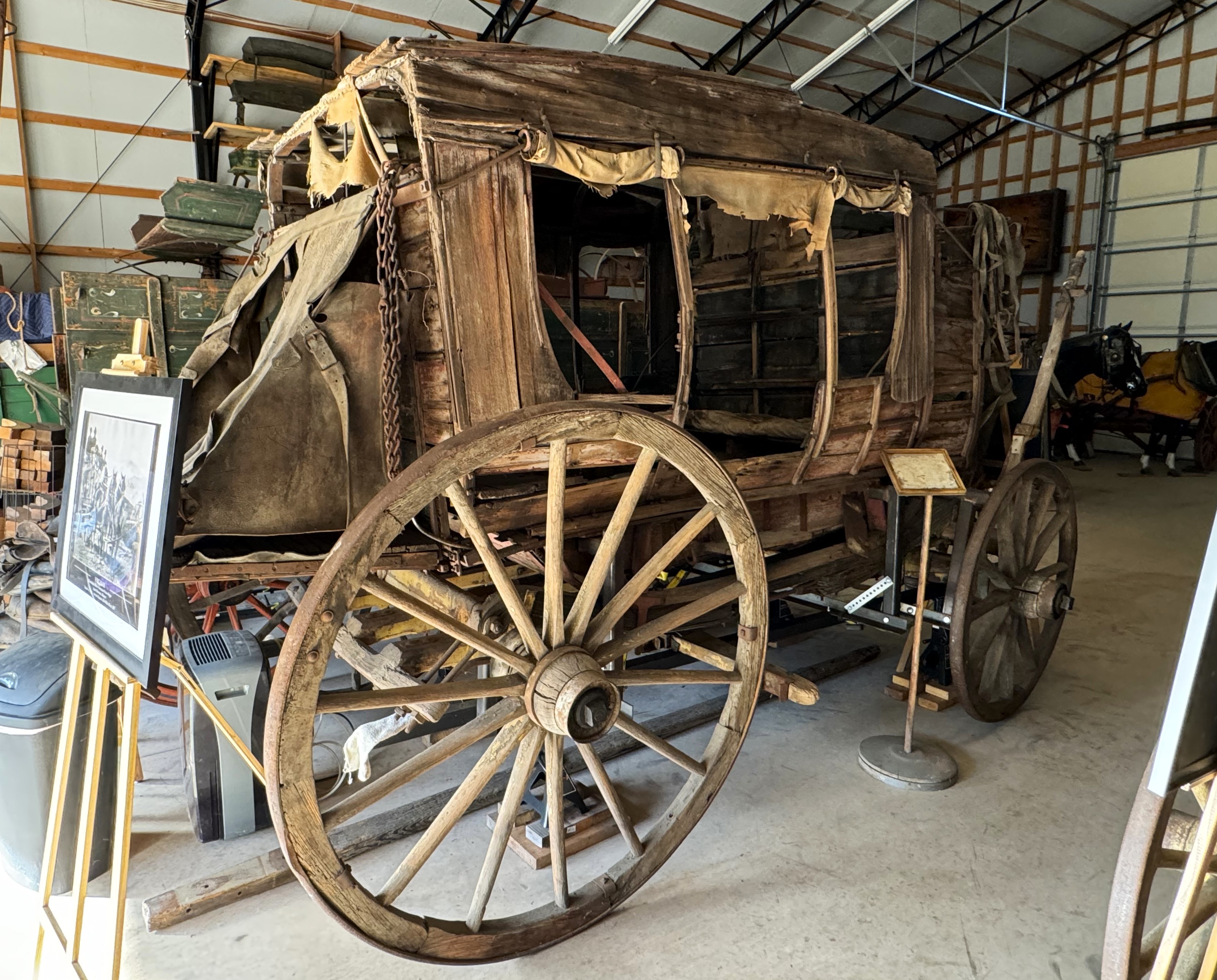
After acquiring the stage in April of 2019, we went to work tracking down the life of the vehicle. More of that story is still to come but part of the quest has been to locate the correct lamps. I'm a bit of a historical perfectionist so the chore of finding these turned out to be more than the proverbial 'hill to climb.' Nonetheless, we've been determined to not rush the process as the stage is an incredibly unique opportunity to re-experience the Old West and America's stagecoaching legacy, especially in eastern Idaho and western Montana. That decision to be deliberate and purposed in the search for documentation, without hastily attacking history, is a direction that has paid off... helping us locate and preserve lost connections that might otherwise have gone unnoticed and unaddressed.
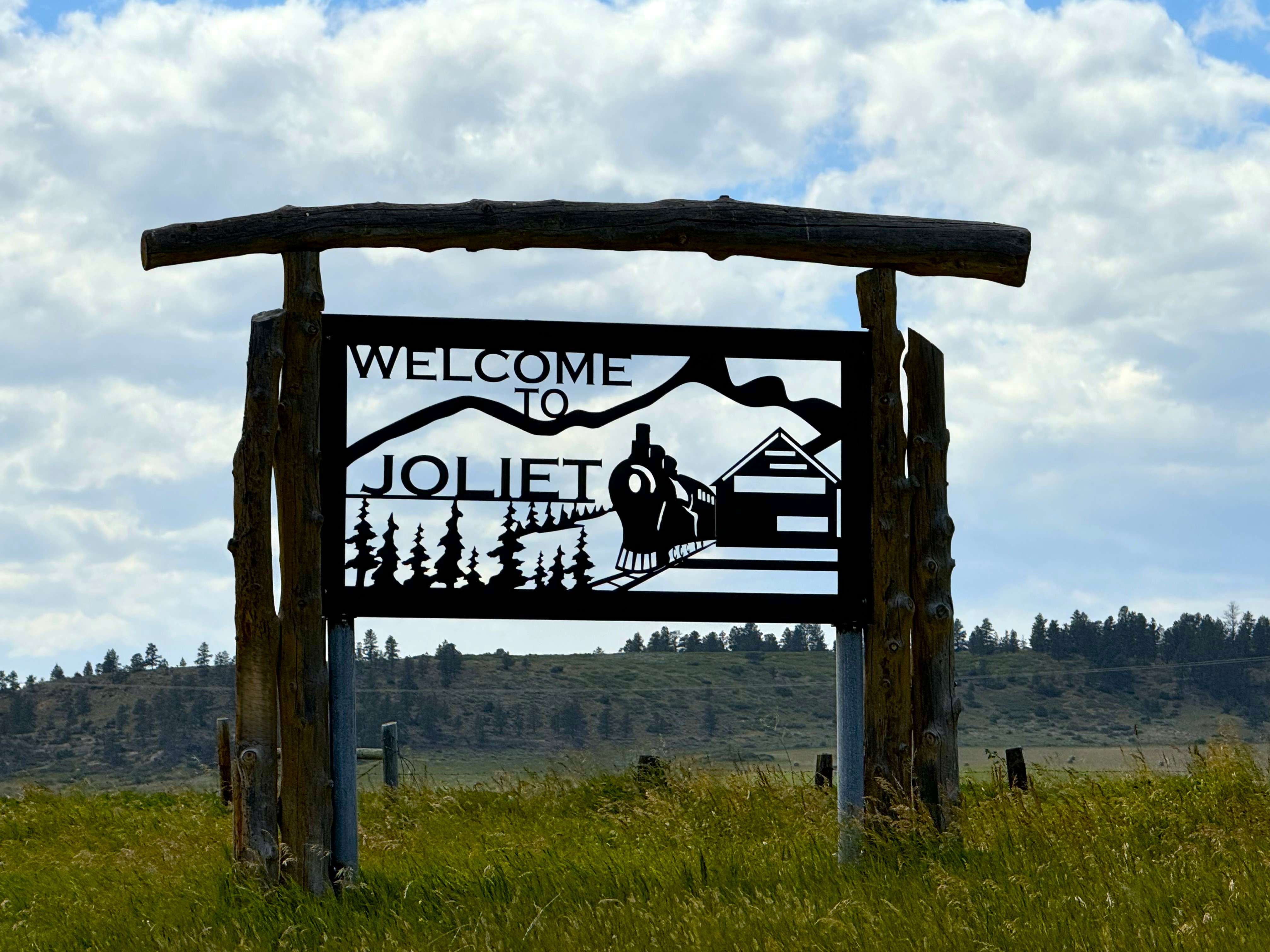
This sign greets visitors to Joliet, Montana.
As it happened, in January of 2022, I was a guest speaker at the CAA carriage and wagon conference near Washington, D.C. During one of the dinner functions, I had the good fortune of sitting at the same table as Rick and Pat Bischoff, owners of The Luminary Shoppe in Joliet, Montana. Rick was there to share his knowledge of early vehicle lamps. As we spent time together, I learned more about his business and how our two worlds were about to further intersect. Rick has a focused, yet down-to-earth personality that belies his deep knowledge and extensive experience related to lamps used on period, horse-drawn vehicles. In fact, I'd venture to say that if you can name a specialty vehicle and timeframe, Rick will know what lamps are appropriate for it. From hearse to brougham, park drag to stagecoach, he is an unabridged encyclopedia of lamp-building acumen and insight.
As my wife, Tonya, and I listened to Rick and Pat, we learned of his impending retirement. What!! How could this be? I mean, I had just discovered him and now I'm learning he's about to shut down his operation? It seems that after five or six years of building antique vehicles and then over forty years of fabricating reproduction and original-patterned lamps as well as a deep dive into restoration and repair work, Rick was looking forward to enjoying the decades-long fruit of his labor. The longer I listened, though, the more I knew, this was a fateful meeting.
Rick's perfectionistic approach to handcrafting early vehicle lamps in the precise manner and with the same materials used by legendary nineteenth-century makers was EXACTLY what I was looking for. After I shared some of the background of our stage, he confided that he not only had the original Abbot-Downing lamp patterns for our coach but he also had one last set already cut out. I was hoping he didn't see my jaw fall open. What are the chances! He also had a set of original elbow mounts as well as an original A-D lamp holder and wing nut. At this point, I was hooked and ready to jump in the boat! Considering these original-pattern lamps are about as easy to find as a Sasquatch riding a jackalope, my enthusiasm was poorly masked, and I pled with him to build one last set for our J. Stephens Abbot Heavy Overland stage.
He had plenty of work and wasn't looking for more, but we were kindred spirits and, after cautioning us that it might take some time, he agreed to take on one more project. With all he had on his plate, it took the better part of two and a half years to finally get those double frame stagecoach lamps. Tonya and I had to decide if we wanted them to look as they did when new or have a finish that reflects more age and use. Since our plans are to keep the stage in its last well-used state, we opted for a less flashy, matte finish that will likely have some additional antiquing done to it. It's been like the proverbial icing-on-the-cake to have these lamps with the original mounting parts for the old stage. This set will help bring the old warrior back to the1860's when it was running routes to and from Virginia City, then capital of Montana Territory.
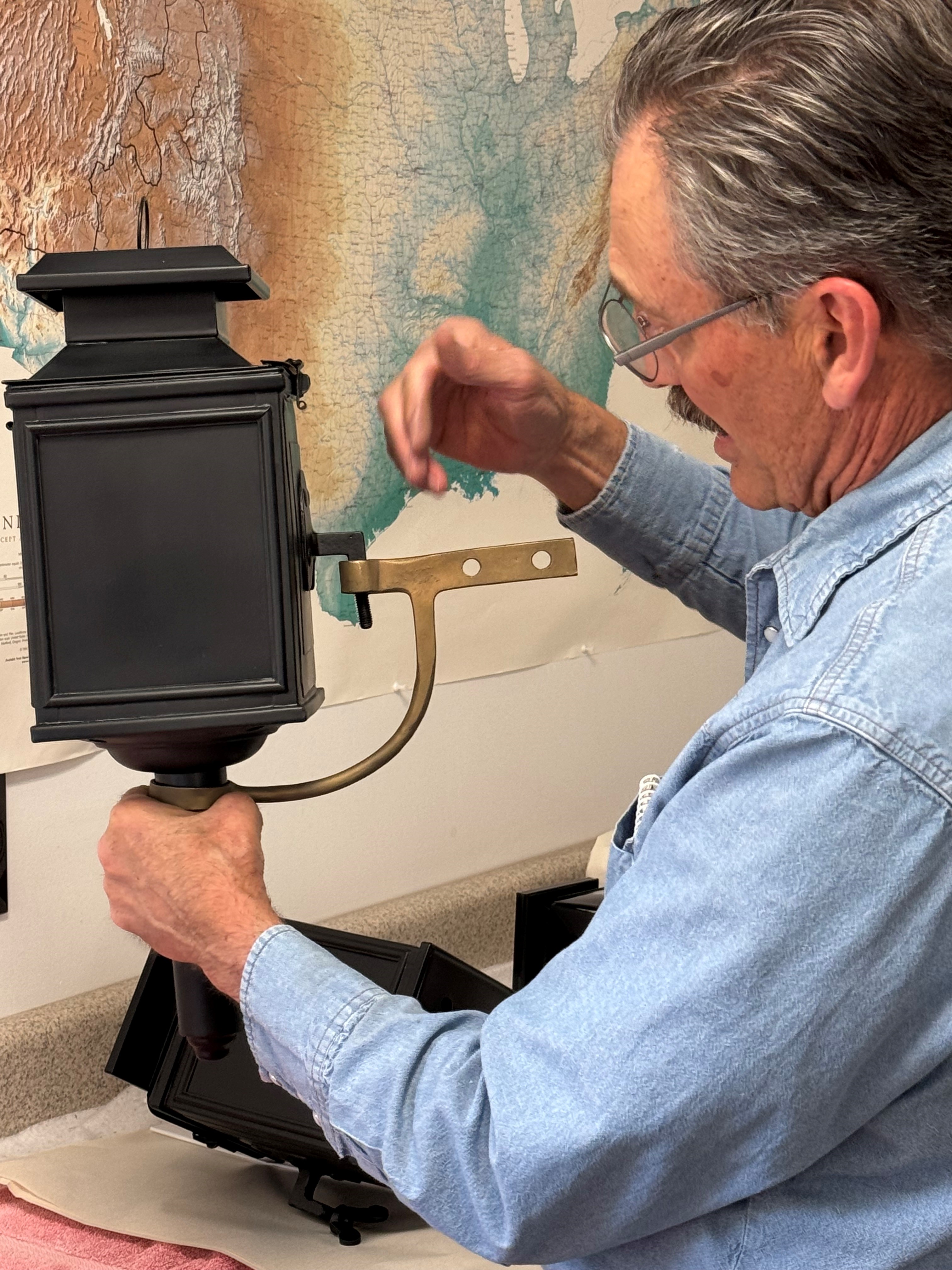
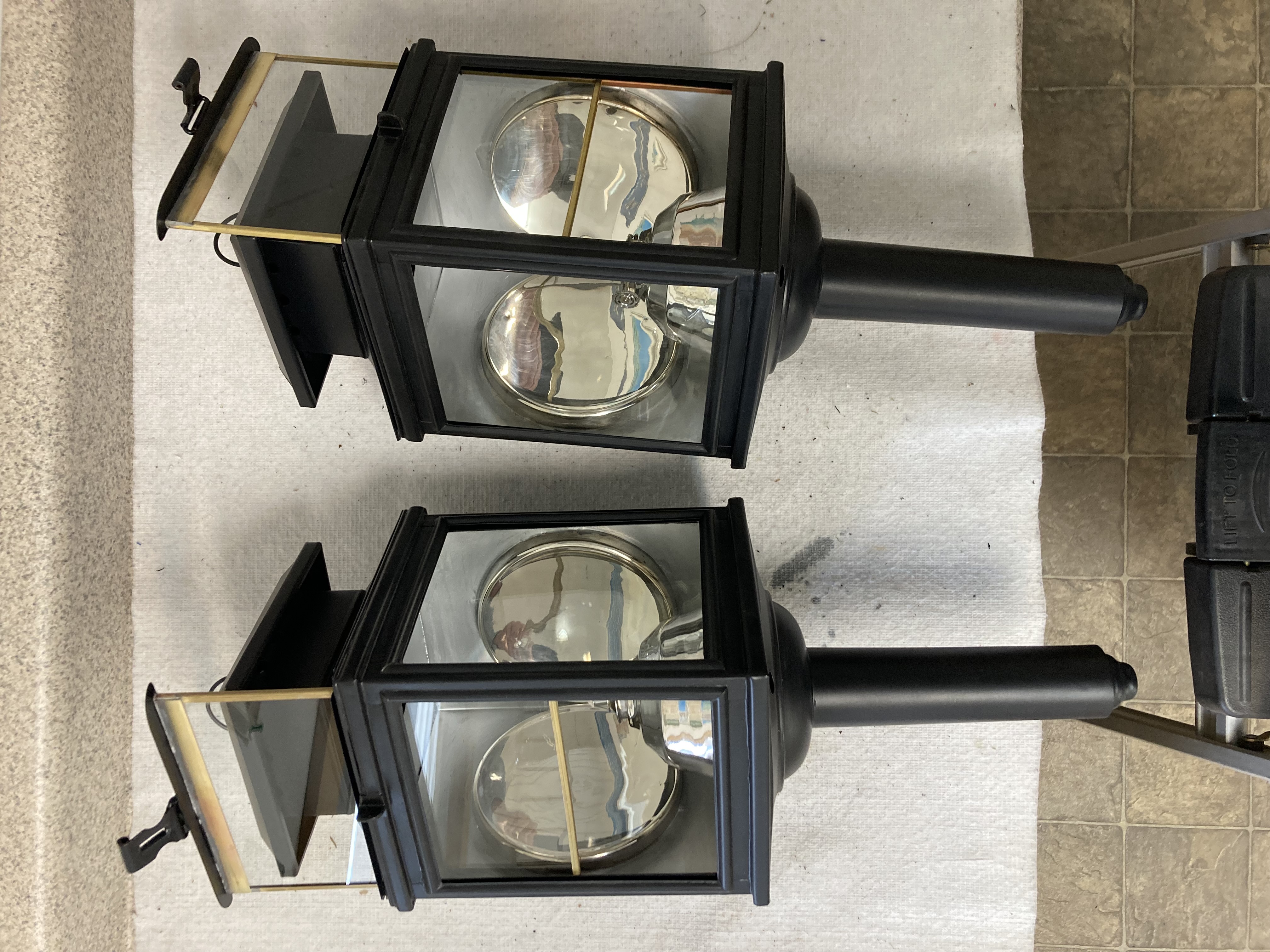
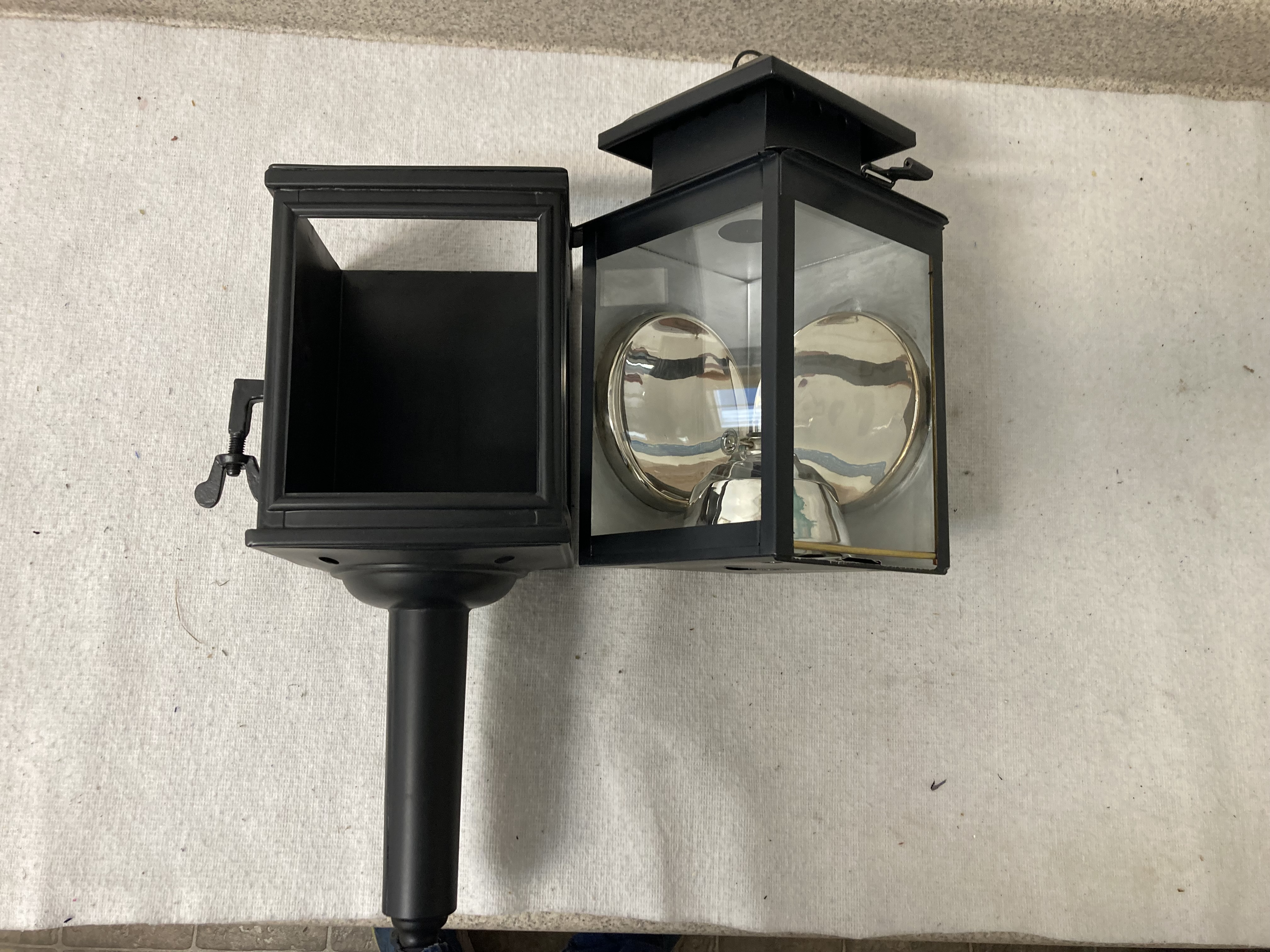
Handbuilt from the original specs of lamps used on Abbot-Downing Heavy Overland stages, these pieces represent long-lost counterparts of stage number 11911 from the J. Stephens Abbot company of Concord, NH. Lamp images courtesy of Rick and Pat Bischoff.
As of this writing, regrettably, The Luminary Shoppe in Joliet, Montana is closed. Rick had desperately wanted to find someone to continue carrying the torch but constructing these delicate works of art with Old World ways is not something most of the twenty-first-century world is interested in. Few do this kind of work. It's even harder to find someone producing the same level of detailed, authentic lamps that are historic matches in every respect. The main reason, it seems, is the lack of supporting craftsmen; those able to do sophisticated levels of mass plating, metal spinning, custom glasswork including bending and beveling, and also those fluent in silver plating. The challenges of EPA regulations can be even more intimidating. After listening to Rick describe the intricate nature of the business, it seems to me that procuring true, historically correct lamp services with sufficient skillsets may be like trying to capture the wind.
After opening a carriage shop in 1977, Rick's career started to take a turn in 1982. Pondering new directions, a year later, he decided to completely re-focus his horse-drawn vehicle attentions to that of reproduction lamps. As his business grew, Rick added employees and built hundreds of these lamps each year. Gradually, he developed even more appreciation for the repair and restoration of original pieces. In the early 2000's, the re-pop lamp business began slowing. That's when he began to pour more of his focus into the original works. His appreciation for nineteen-century craftsmanship led him to an even deeper world of knowledge and skill. Describing his beginnings, he laughs and says that many of his first efforts ended up as barrels of scrap metal. Determined to succeed, he gradually began to actually 'feel' the metal forming and conforming to the desired contours. Like the vehicles, themselves, these original designs have a personality that must be felt and thoroughly understood before we can genuinely connect with them.
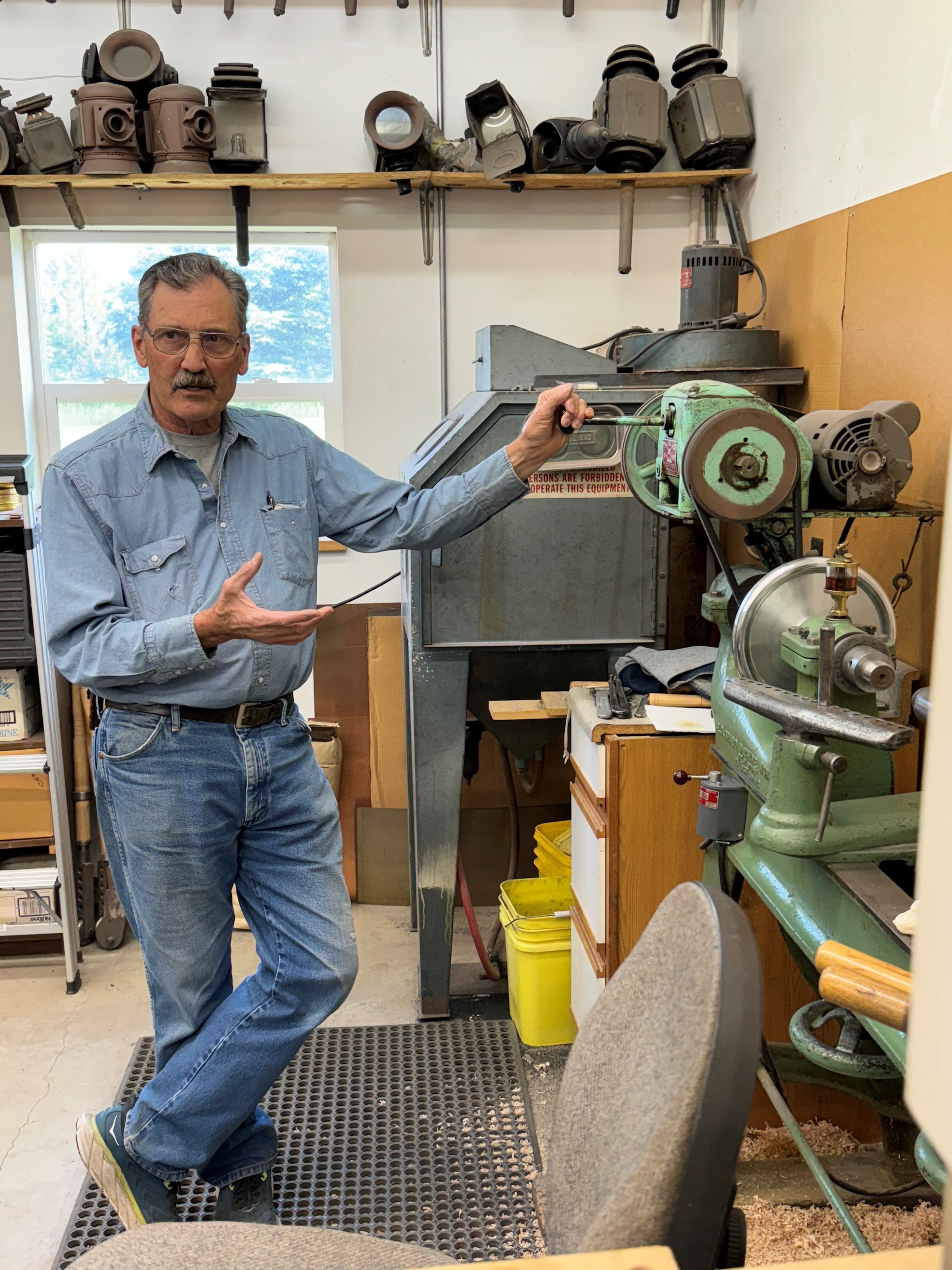
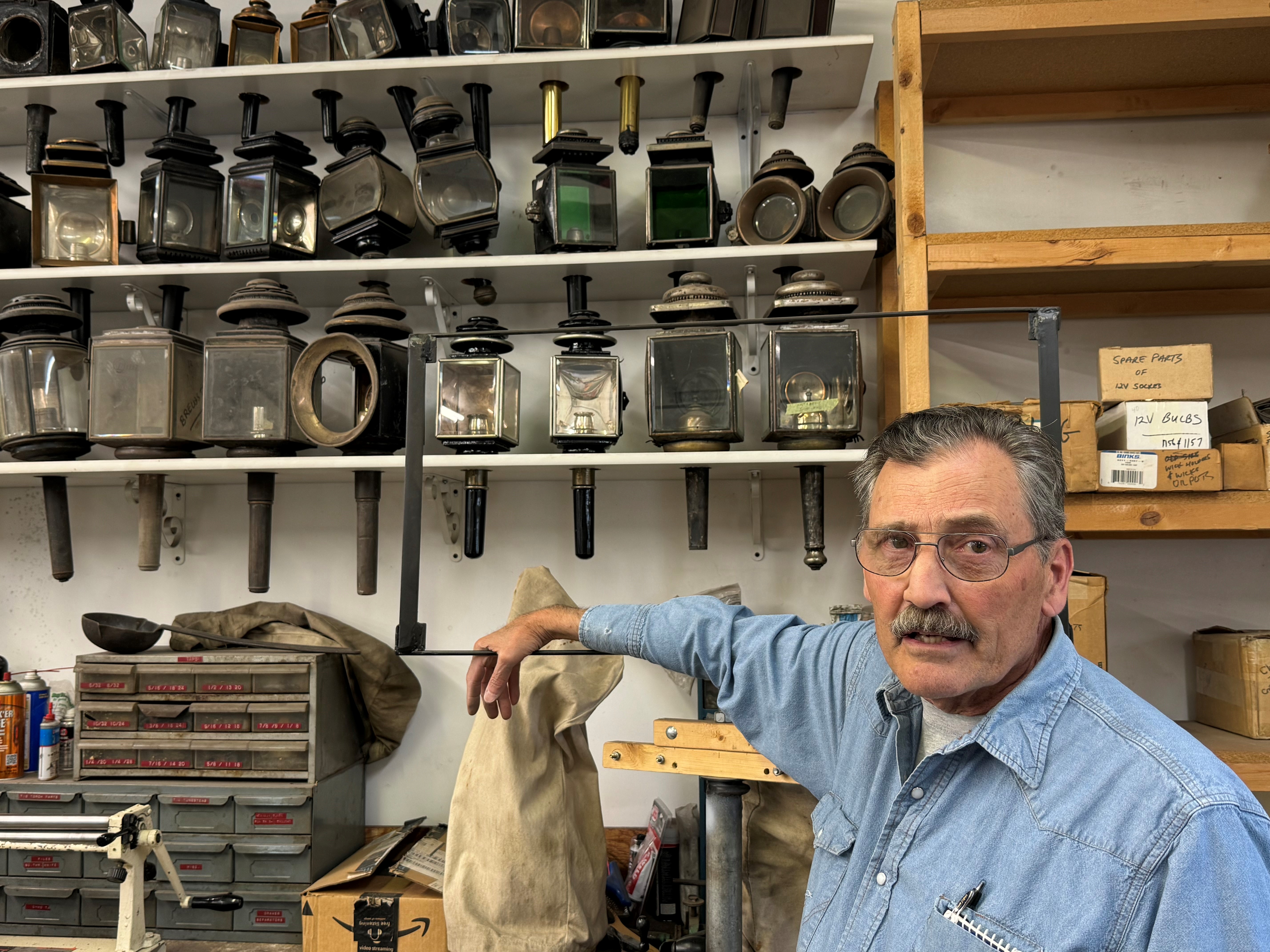
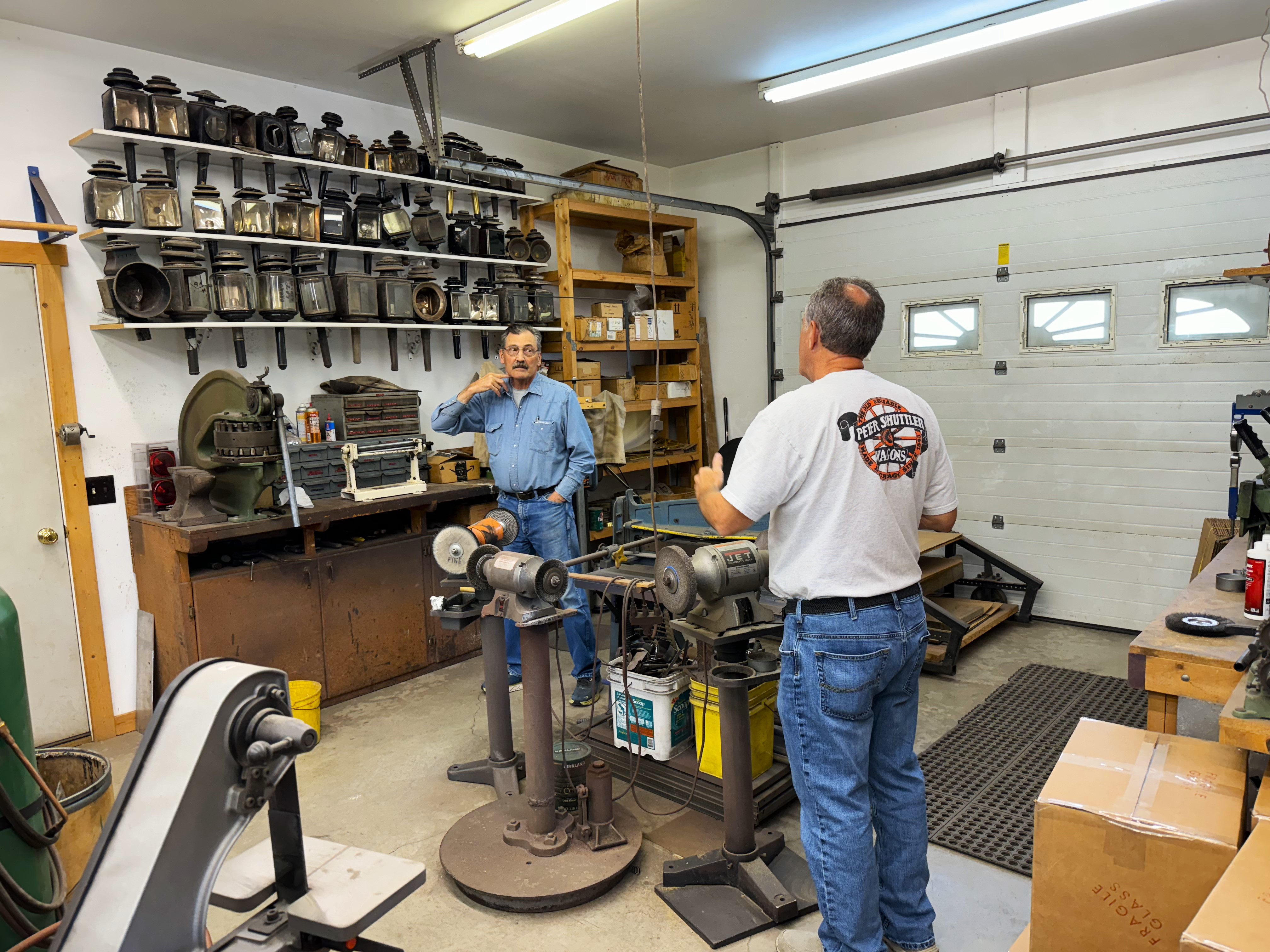
Rick Bischoff is an encyclopedia of original lamp design and construction knowledge.
Rick's ultimate goal was to build and restore pieces that were impossible to discern from original 1800's pieces. It seems that he more than accomplished the intent. His work has found its way into the hearts of museums, private collectors, and enthusiasts all over the U.S. His expertise in re-creating our Abbot-Downing stagecoach lamps meant he had to spin the bottom of the lamps and top of the tail to the original specs. In fact, he had to fabricate all of the parts except for the wickholders. (As mentioned earlier, the elbow lamp holders along with one mount and nut are from original A-D lamps). Over his career, Rick made a total of five sets of lamps from the original Abbot-Downing patterns. Ours is one pair of those five.
On our visit to his shop in July of 2024, we saw an immensely ornate set of 1895 hearse lamps he'd been finalizing. On those, he had recast some parts as well as done additional fabricating, nickel plating, silver plating, and installed new glass. At a whopping 55-inches in height, they were an exquisite and masterful sculpture.
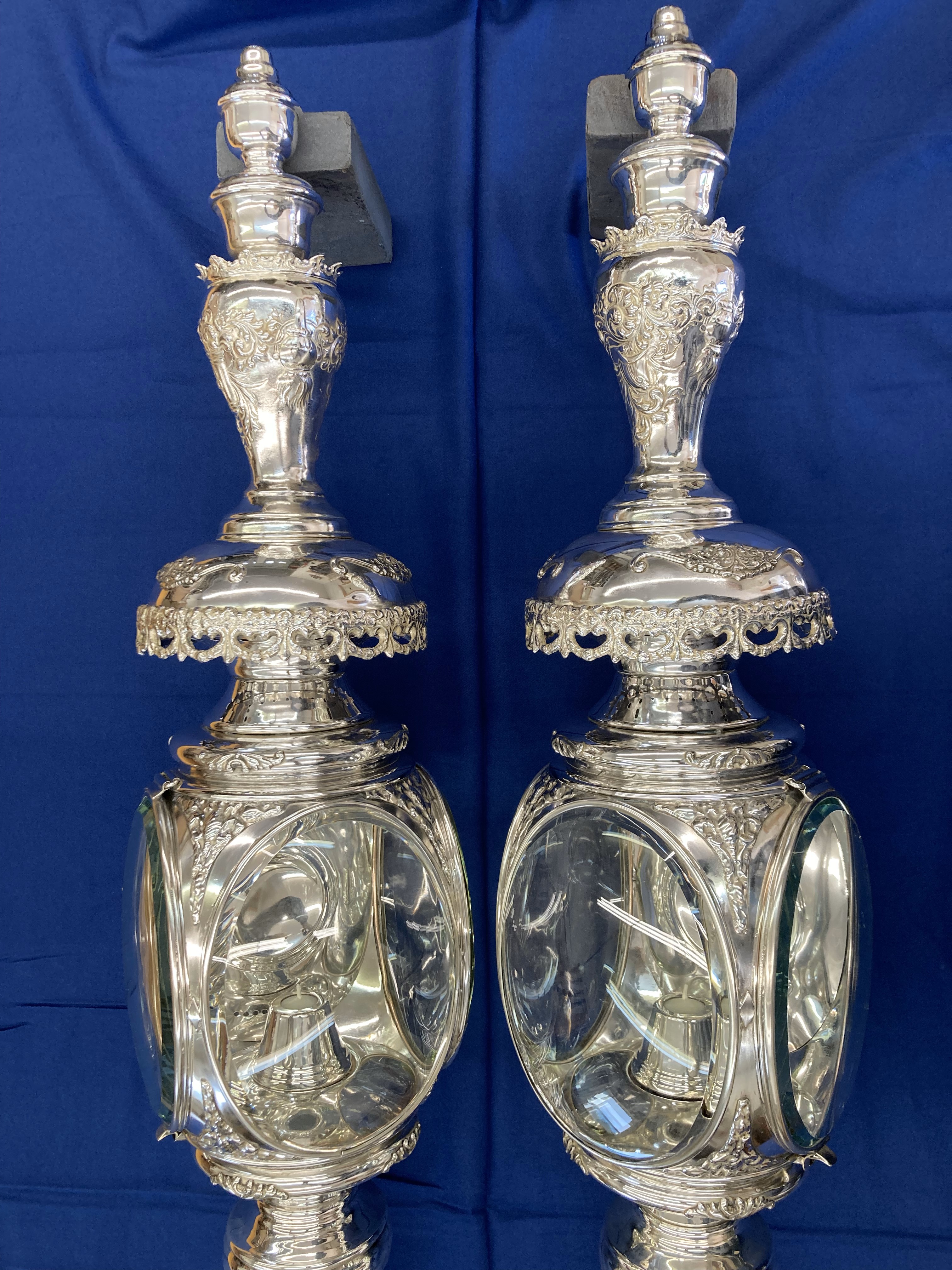
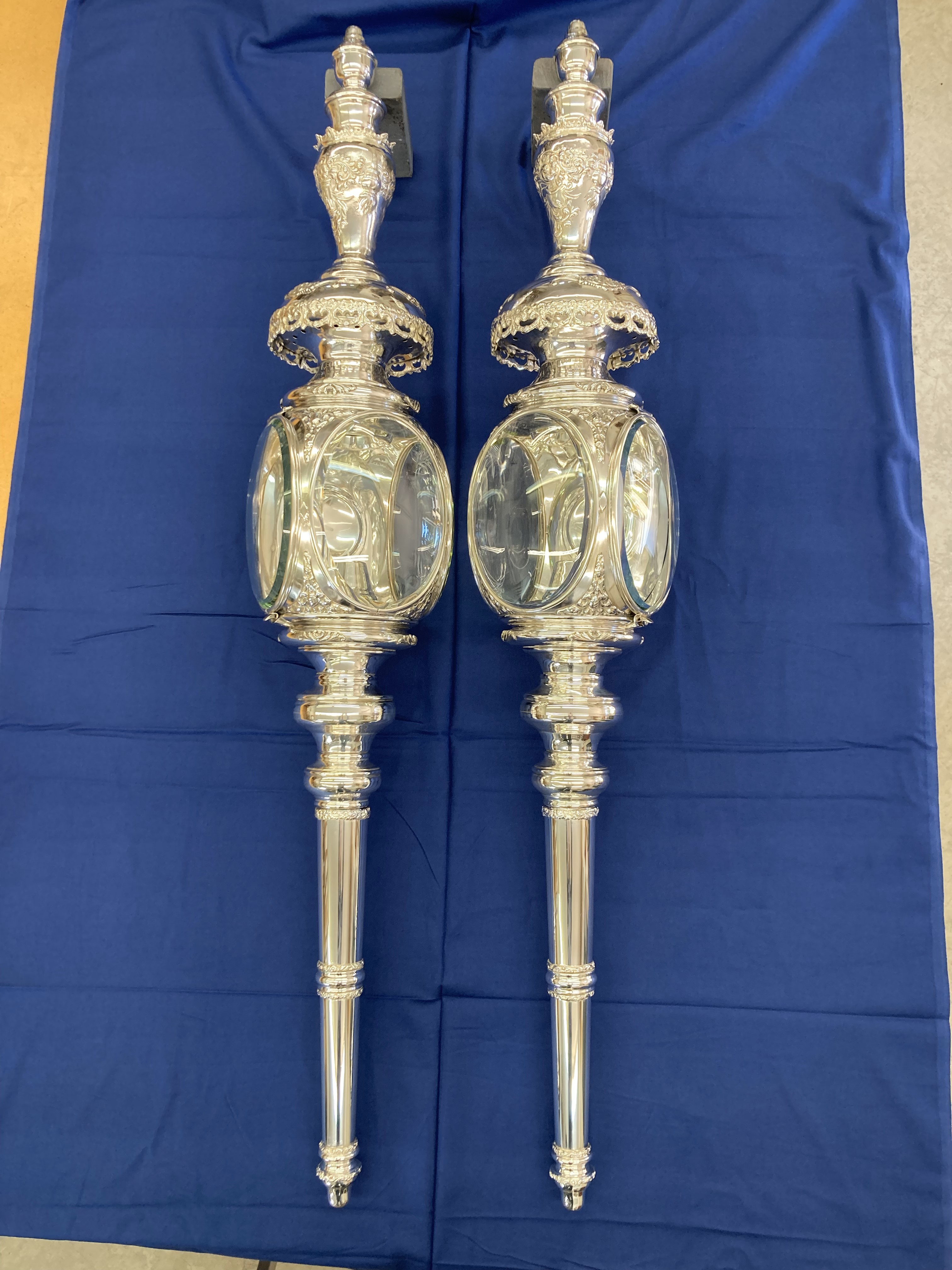
This ultra-rare set of hearse lamps will date to 1895 and were among the last projects to be completed at The Luminary Shoppe in Joliet, MT. In addition to many near-impossible-to-find lamp patterns, Rick Bischoff had a collection of roughly 200 original lamps. Lamp images courtesy of Rick and Pat Bischoff.
Officially retired, Rick has sold his shopful of specialized materials. The spinning lathe, wood forms, planishing tools, scissor devices, sheet-metal equipment, circle cutter, bending break, punch press, and stamping presses have all fallen silent. They now stand as mute reminders of another time when craftsmen were more than quick-turn assemblers of cheap copies, they were fashioners of amazing works of art from scratch. As it turns out, some of these legacy materials can still be seen in Joliet. Rick's brother-in-law, Dave, purchased many Luminary Shoppe items and has a number of them (including rare, original lamps) on display in a small museum there.
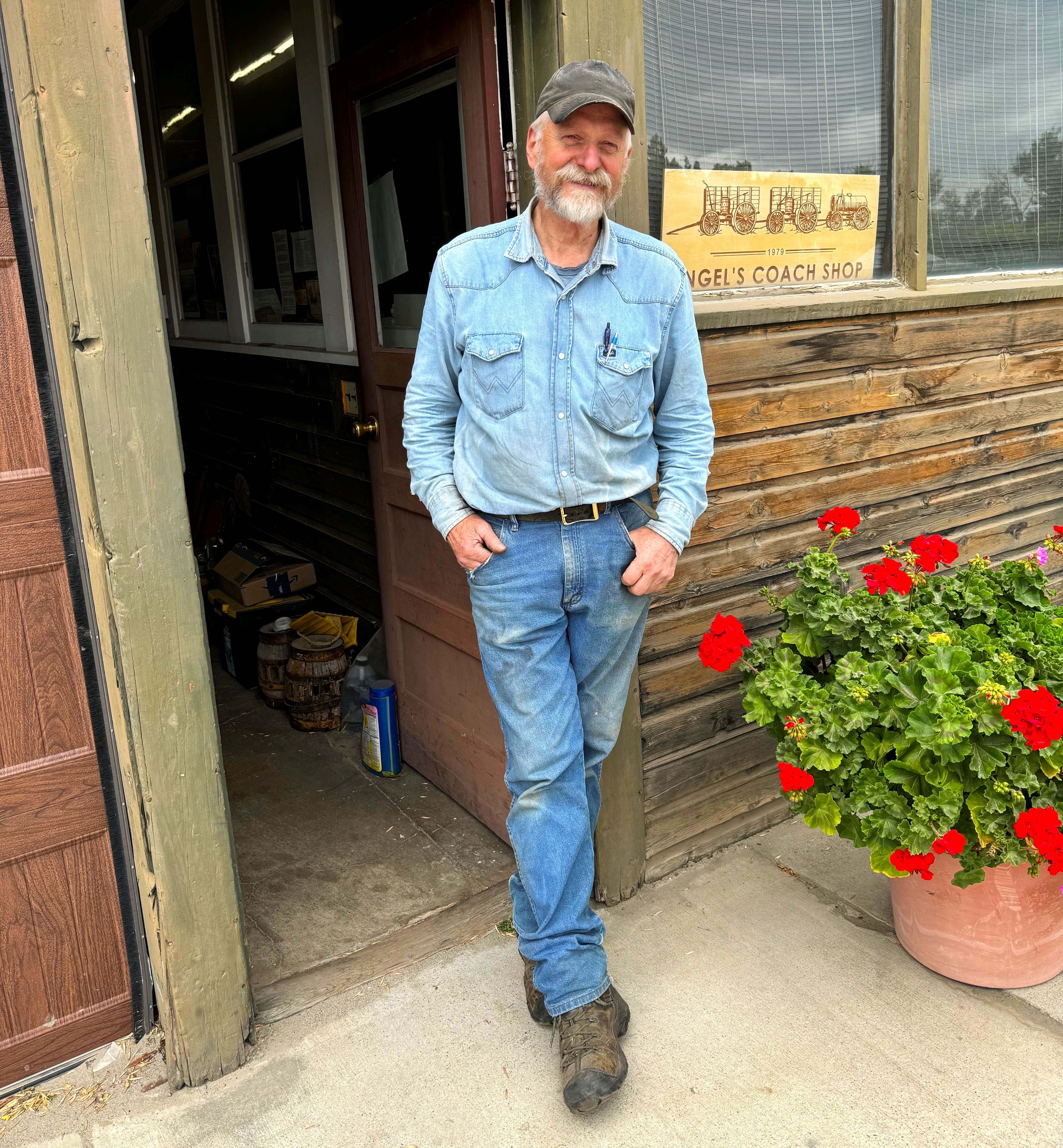
Relaxed at the entry to his shop in Joliet, Montana, Dave Engel is well-known for sharing so much knowledge related to horse-drawn vehicle construction and design. He's produced over 500 videos, many of which can be seen on YouTube.
Some of our readers may know Dave. He's a well-known early vehicle craftsman, himself. As it happens, Dave Engel also calls Joliet, Montana, 'home' and his company, Engel's Coach shop, is just a few minutes down the road from where Rick built, refurbished, and restored so many historic lamps. In business for almost a half century, Dave's focus on the past is one that has its own story. He's now ceased doing projects for customers and is working on a long list of his own projects. We'll take a look at some of his current jobs and past highlights in an upcoming post. In the meantime, feel free to reach out if you have an idea for a wood-wheeled topic that you'd like to see us cover. Have a great week!
Ps. 20:7
